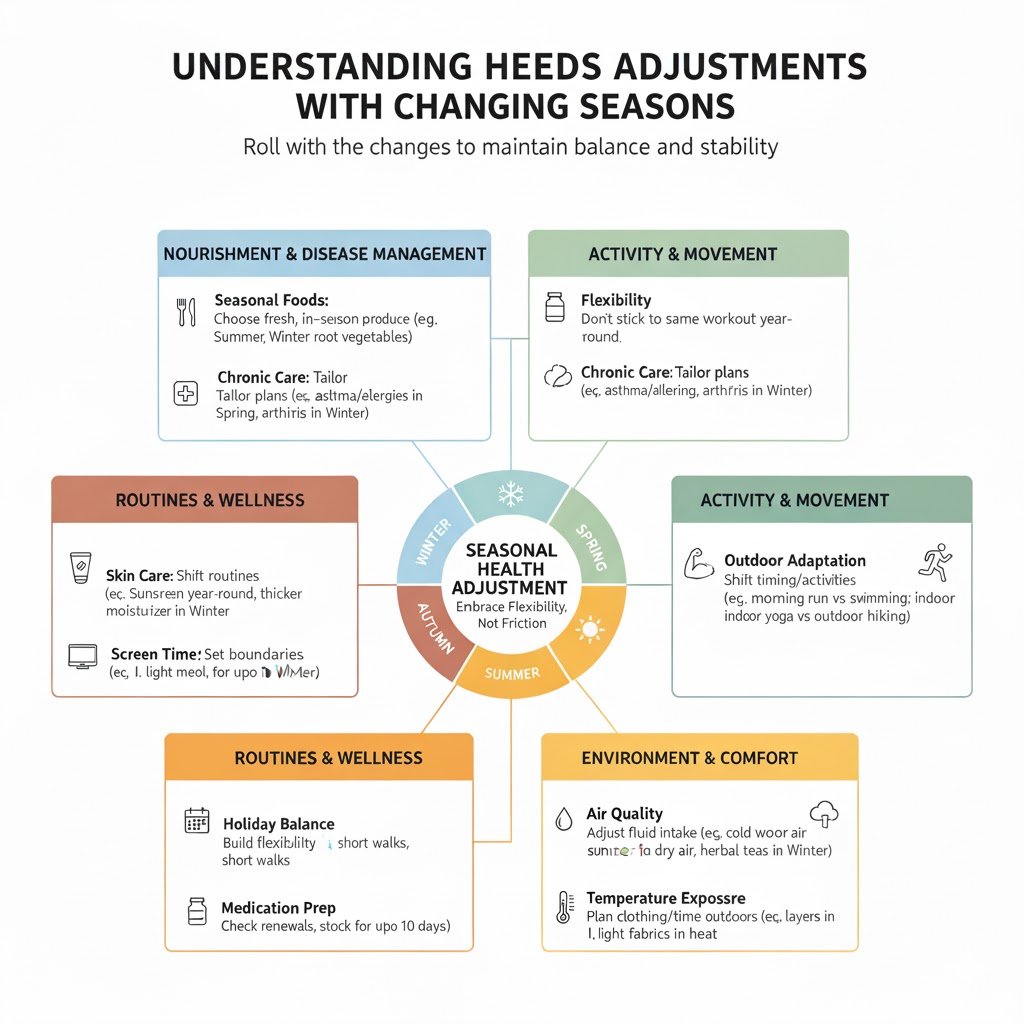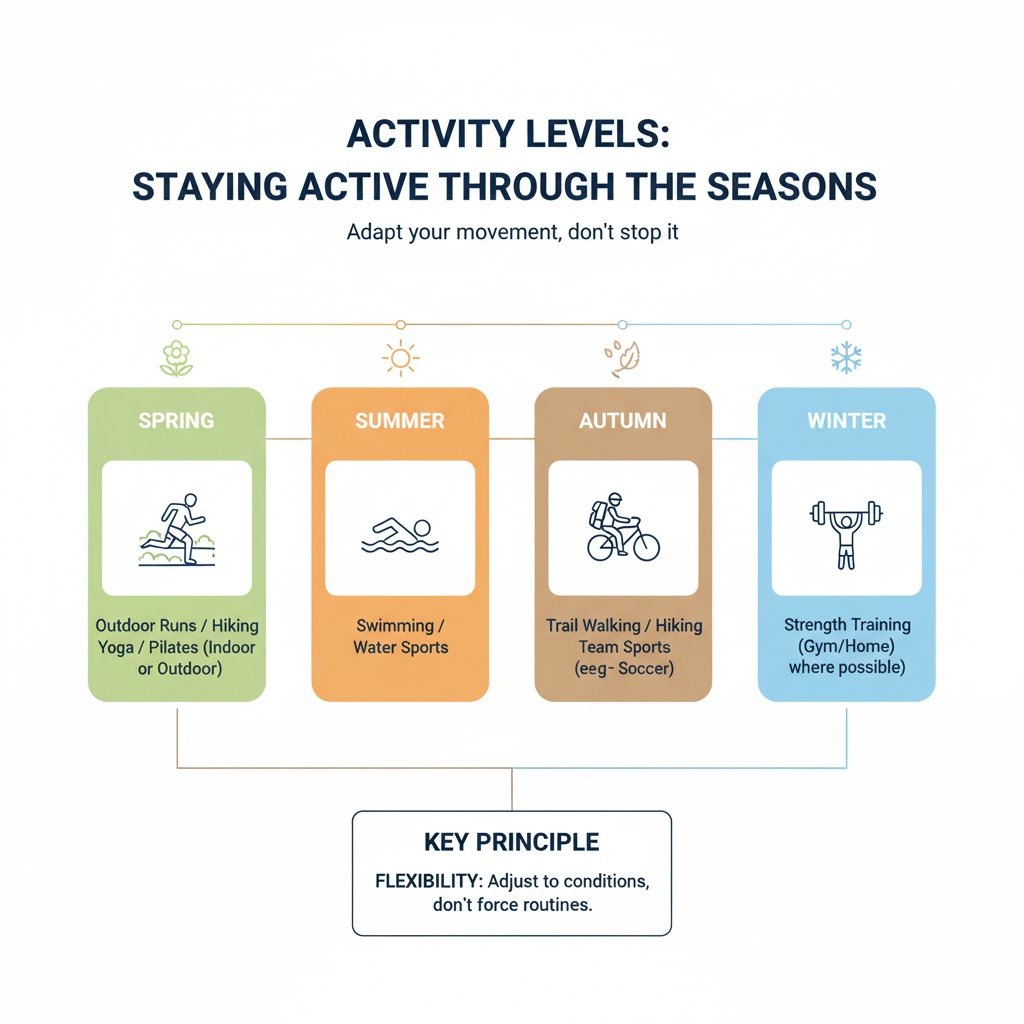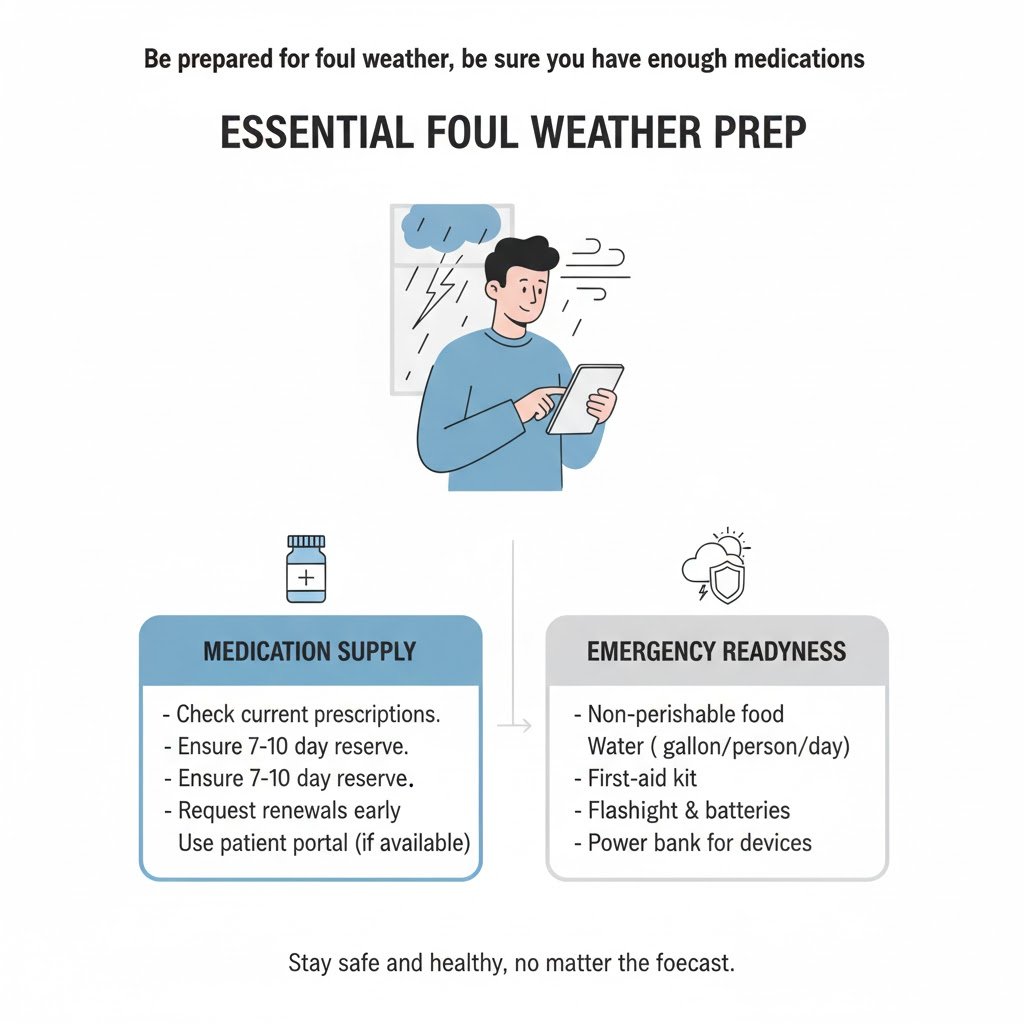Seasons have a way of shaking up routines, whether we plan for it or not. One month you’re all about iced drinks and long evenings outside, and the next you’re digging out blankets and sipping hot tea before dinner. Health habits ride these changes too, and pretending they don’t usually ends in frustration. Paying attention to what each season demands keeps things simple and makes life feel a little more in sync with nature.
- Instead of fighting against shorter days, hotter afternoons, or sudden holiday feasts, it’s smarter to roll with them.
- Adjusting food, activity, rest, and even how you manage your skin or screen time can make each season feel less like a challenge and more like a fresh opportunity.
Understanding Health Needs Adjustments with Changing Seasons
Changing seasons can significantly impact individuals with chronic conditions, making it vital to adjust chronic disease management strategies.
Seasonal shifts can exacerbate symptoms for those with conditions like asthma, arthritis, and heart disease. For instance, cold weather can increase joint pain and stiffness, while spring may trigger allergies that complicate respiratory conditions.

- Adhering to disease management solutions and chronic disease management guidelines that account for these changes helps in mitigating risks and ensures continuous, effective care.
Tailoring management plans to seasonal variations is essential for maintaining stability and health.
Food Choices
Food always takes centre stage when seasons shift. Fresh berries in summer, warm soups in winter—it’s natural to crave what’s available, and leaning into that is one of the easiest ways to stay balanced. Seasonal foods are often tastier, usually easier to find, and sometimes even cheaper because they’re in abundance. Eating with the seasons doesn’t mean reinventing your meals every few months. It just means picking what feels right for the time of year and letting your plate follow suit.
Supplements can also fit into this approach as part of steady daily habits. Products from USANA Health Sciences work well when paired with meals, helping to round out nutrition without trying to replace real food. The idea is to treat supplements as support, while seasonal produce keeps things interesting. A breakfast with fruit that’s in season, plus your regular supplement routine, keeps everything practical and simple.
Activity Levels
Warm spring days invite you outside, while icy sidewalks in winter make staying in sound a lot more appealing. Instead of pushing the same workout plan year-round, it makes sense to let the conditions guide you. Hiking trails call in the fall, while indoor activities like yoga or strength training make more sense when the cold hits.

The trick is flexibility. If it’s too hot for a midday run, switch it to the morning or swap it for swimming. If it’s pouring outside, pull out a mat and move inside your home. Viewing activity as adaptable keeps you consistent without forcing routines that don’t fit the season.
Hydration Needs
It’s easy to forget that hydration changes with the weather. Hot days mean sweating more, while cooler months can make you forget to drink enough water altogether. People often think of hydration as a summer-only issue, but staying consistent matters in every climate. The amount may shift, but the need never goes away.
Practical tricks help here. A water bottle on your desk is a year-round reminder. In winter, herbal teas or warm water can make staying hydrated feel less like a chore. In summer, keeping cold water close at hand is usually enough.
Air Quality
Not all seasonal changes are about temperature. Humidity and air quality shift, too, and they can have more impact on comfort than people realise. Dry winter air can leave you parched, while humid summer days make everything feel heavy. Pollination in spring or dust in late summer can also change how the air feels day to day.
- Adjusting your environment helps ease the transitions.
- A humidifier during cold, dry months or an air purifier in pollen-heavy seasons makes the air indoors more comfortable.
- Even opening windows at the right time of day or limiting time outdoors when air quality dips can make life smoother.
Holiday Routines
Between the extra food, busy schedules, and social gatherings, it’s easy for routines to get completely thrown off. Trying to stick to the same plan during the holidays often feels impossible, which usually leads to frustration. A better way is to build in a little flexibility while keeping some structure in place.
That could mean having lighter meals before big gatherings, carving out short walks to balance long sitting times, or simply recognising that holidays come with indulgence and that’s okay. Traditions should be enjoyed, not battled against.
Skin Care
Skin doesn’t react the same way in July as it does in January, which is why sticking to one routine all year rarely works. Cold months may call for extra moisture to handle dry air, while hot months might need lighter products that don’t feel heavy.
A thicker moisturiser in winter, sunscreen year-round, and maybe a light cleanser when humidity is high can work. Skin care has to match what the season is doing.
Temperature Exposure
Every season brings its own version of extreme temperatures, and pretending it doesn’t matter usually ends in discomfort. Summer heat can leave you sluggish if you don’t adjust, while winter cold makes even the shortest walk feel like a chore. A little planning goes a long way; for instance, layering clothes in cooler months or sticking to lighter fabrics in warmer ones keeps you comfortable without overthinking it.
Temperature exposure isn’t just about clothing, though. It’s also about adjusting routines to fit the season. Hot afternoons may call for moving workouts to the morning, while icy nights may mean spending more time indoors.
Seasonal Recipes
Cooking feels different depending on what’s in season. Winter calls for slow-cooked meals and hearty bowls, while summer makes lighter, fresher options sound more appealing. Switching recipes to match seasonal ingredients keeps meals interesting and also makes them easier to prepare since the food is at its best and often widely available.
This approach takes some pressure off the kitchen, too. Instead of forcing the same meals year-round, you let the season guide you. Fresh salads when produce is abundant, roasted vegetables when markets are full of root crops, or simple stews when the weather turns cold.
Screen Time
Screens have a sneaky way of filling more hours when outdoor time shrinks. Shorter days in winter often lead to more TV or scrolling, while summer sunlight tends to pull people outside. Paying attention to this seasonal shift helps keep screen use balanced.
That doesn’t mean screens are bad; it just means they need boundaries. Setting limits, finding small substitutes like reading or chatting, or even moving activities outdoors when possible, helps create variety. Awareness of seasonal changes in screen time keeps it from becoming the default way to fill every extra minute.
Health shifts right along with the seasons, and pretending it doesn’t usually creates friction. Food, activity, rest, and hydration all change with the weather, daylight, and the traditions that come with each part of the year. The smartest approach isn’t to resist but to adjust. Treating seasons as guides makes health routines feel natural instead of forced.
Be prepared for foul weather, be sure you have enough medications

Living in the northeast, storms sometimes affect our routines. Be sure to check that you have all your medications for up to 10 days and that your physician has given you renewals that you may need. Premier Medical Group patients can use their patient portal to renew medications or ask your doctor for medication information.
This fall, as you feel the air become more crisp and watch the trees shed their leaves, make sure you are just as aware of the ways in which your body is changing. Doing so may allow you to take preemptive measures regarding your physical and mental health, preventing the development of more serious conditions further down the line.

